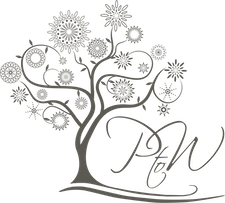Depression: What Are Common Types and How Do They Differ?
Clinical Depression/Major Depressive Disorder
Diagnosed as major depressive disorder (MDD), clinical depression is often referred to as one of the most severe types of depression. It is actually a mood disorder, typically diagnosed after you experience symptoms for more than two weeks.
Some of the most common symptoms associated with MDD include:
Fatigue
Trouble sleeping
Changes in appetite (weight gain/loss)
Thoughts of suicide
No interest in things you typically enjoy
Major depressive disorder can be very serious without proper diagnosis and treatment. This is especially true when the person experiencing it is having thoughts of self-harm or suicide.
Postpartum Depression
Chances are you’ve heard of postpartum depression (PPD), but many women still don’t fully recognize the signs when they’re experiencing it. More than three million cases of PPD are diagnosed each year, but so many more go undiagnosed.
Postpartum depression can occur after a woman has a baby. However, it doesn’t have to happen immediately. In fact, it can take weeks for symptoms to start to show up.
Signs of PPD include:
Anger
Guilt
Anxiety
Irritability
Fear
Insomnia
Mood swings
There is no shame in being affected by PPD. It doesn’t mean you are a bad mother or that you don’t love your child.
The good news about postpartum depression is that it doesn’t last forever. Unlike some other forms of depression, PPD typically goes away after a certain period of time.
Therapy, support groups, and self-care can help you to manage your symptoms while you’re going through this type of depression. Plus, taking care of yourself emotionally after having a baby will ease negative feelings and help you to be a better parent.
Seasonal Affective Disorder
Another type of depression that seemingly comes and goes in some people is called seasonal affective disorder (SAD).
People who experience SAD typically have the same symptoms as those of major depressive disorder, but only during certain times of year—usually in the winter months. Treatment for SAD includes light therapy and counseling.
Psychotic Depression
Psychotic depression displays many of the same symptoms as major depressive disorder. But individuals suffering from this type of depression often have “psychotic” symptoms as well. This typically includes hallucinations or delusions.
Many people experiencing psychotic depression are also often very paranoid about a variety of things, especially other peoples’ motives.
In many cases, both antidepressant and antipsychotic medications are needed to treat this type of depression. Of course, therapy can also be a big help along the way.
—
This list isn’t exhaustive. There are more types of depression to consider. But these are some of the most common. As you can see, many of them have similar symptoms, but there are slight differences to take note of.
If you feel as though you might be experiencing any type of depression, don’t go at it alone. Feel free to contact us to set up an appointment. Or, visit here to learn more about how we can help.
The more we understand about your symptoms, the easier it can be to make an official diagnosis. Then, we can start on the journey toward managing your symptoms and helping you find peace.
